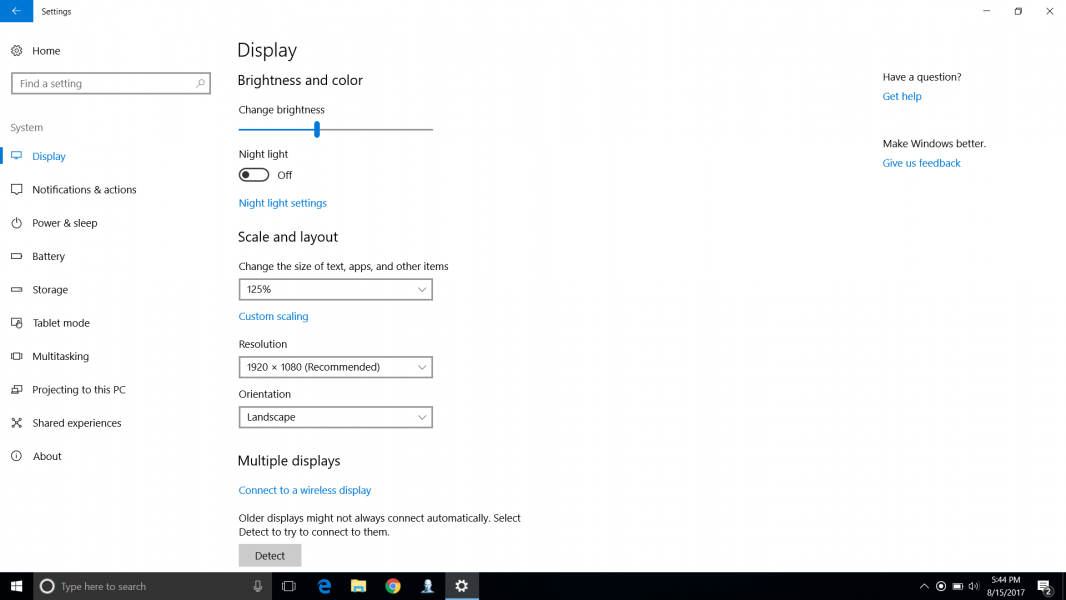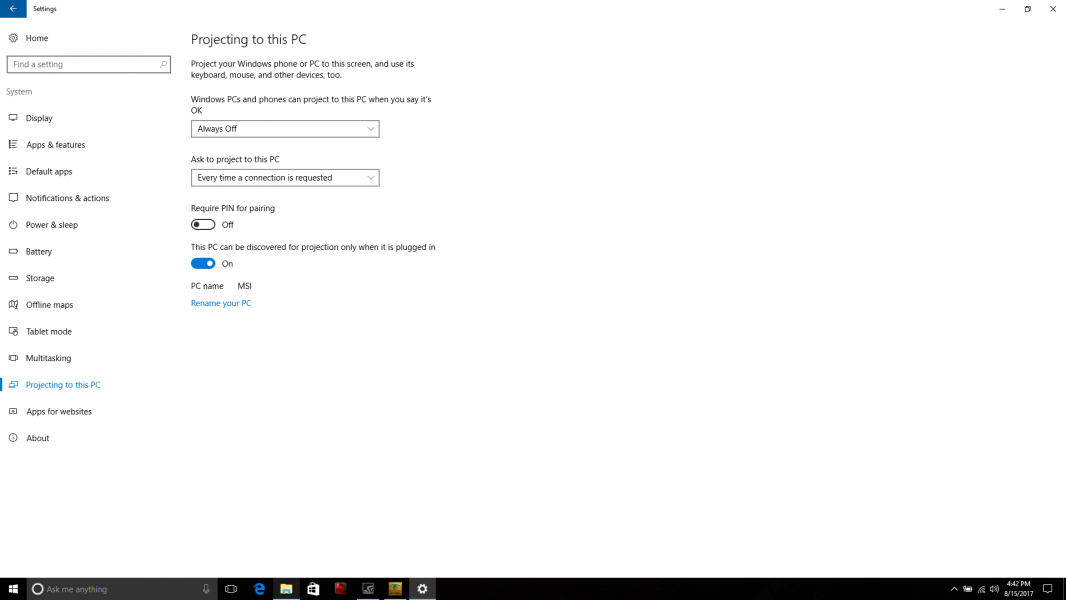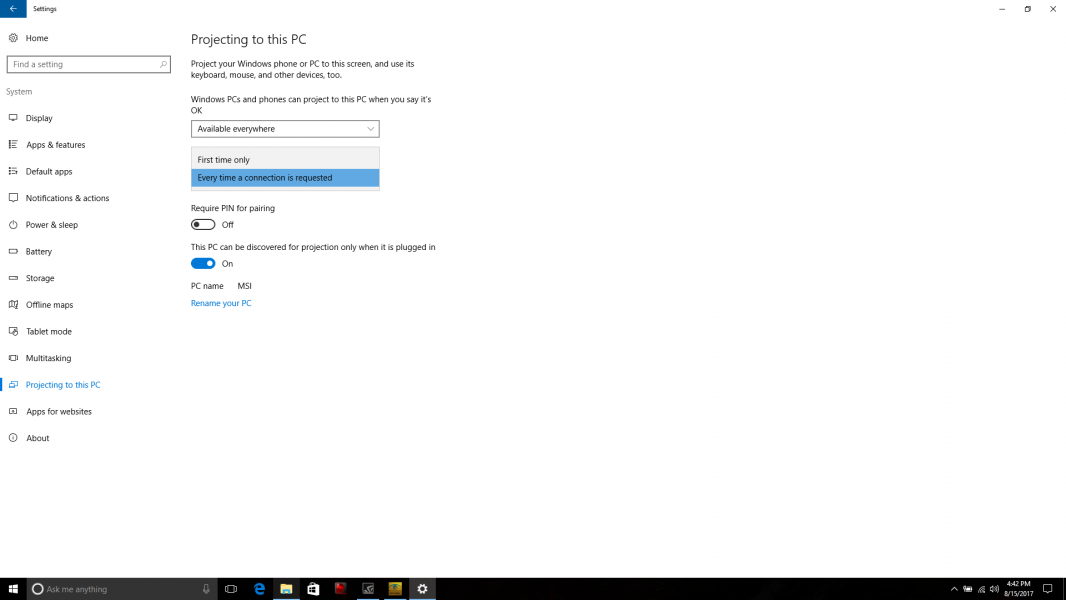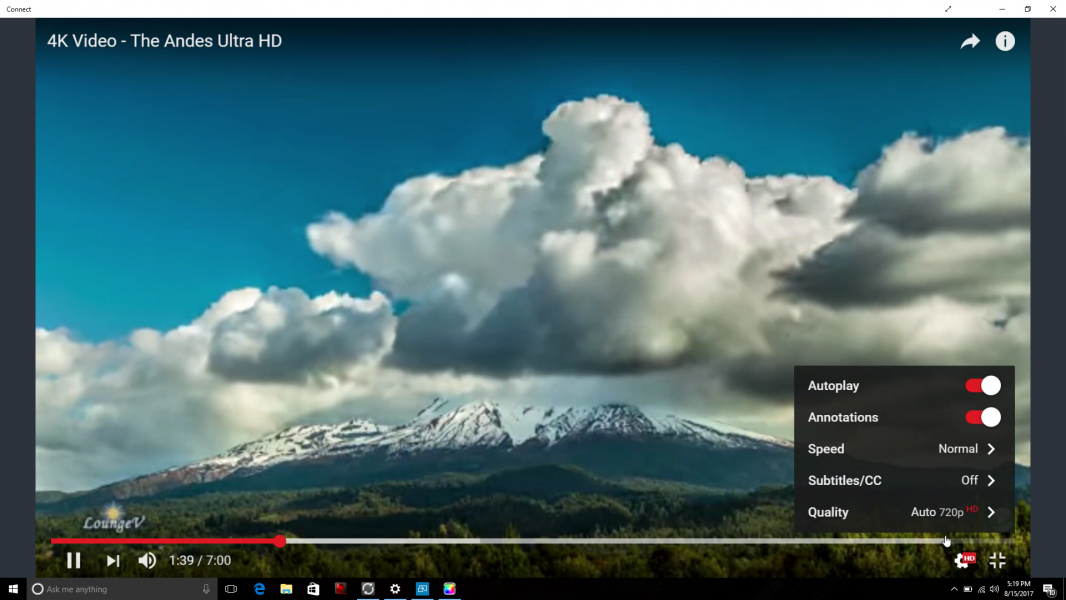The MSI 14-inch GS43VR Phantom Pro Notebook and MSI GS73VR Stealth Pro both run on Windows 10 which supports Miracast to wirelessly share their screens and play content. Here we see how Miracast works between Windows PC's using the MSI GS73VR Stealth Pro to mirror the MSI 14-inch GS43VR Phantom Pro Notebook's screen through the Windows Connect feature.
First make sure both the MSI GS43VR and GS73VR have been connected over Wi-Fi.
On the MSI GS73VR Stealth Pro which will act as a screen, you need to set up projection settings for the MSI GS73VR Stealth Pro so that it can be properly detected by the MSI 14-inch GS43VR Phantom Pro Notebook. To do that, close Windows Connect and go to Settings -> System -> Projecting to this PC in Windows. By default, the option 'This PC can be discovered for projection only when it is plugged in' is turned on, meaning the remote PC must be connected to a power source in order for it to be detected by the projecting PC.
For the 'Windows PCs and phones can project to this PC when you say it's OK' option, we selected 'Available anywhere'.
We also set 'Every time a connection is requested' for the 'Ask to project to this PC' option.
We now see how to set up the MSI 14-inch GS43VR Phantom Pro Notebook to Miracast its display to the MSI GS73VR Stealth Pro.
On the MSI 14-inch GS43VR Phantom Pro Notebook, go to Settings -> System -> Display in Windows and select 'Connect to a wireless display'. The MSI GS73VR Stealth Pro should show up on the right side of Windows assuming it also has wireless display connection running.
When selected, the MSI 14-inch GS43VR Phantom Pro Notebook will start connecting to the MSI GS73VR Stealth Pro over Miracast.
On the MSI GS73VR Stealth Pro, we saw a notification asking whether to allow projection from the other PC and accepted it. Note we also changed the setting such that the PC could be discovered for projection even when not plugged in.
During the Mircast connection process we can see that both screens are getting ready to connect wirelessly.
Once the Miracast connection is established, we also allowed the mouse, keyboard, and touchpad of the PC being used as a screen to control the PC where the Miracast display projection is coming from.
You can change the display mode of the MSI 14-inch GS43VR Phantom Pro Notebook by selecting 'Change projection mode' to extend, duplicate, or use any of the PC's screen. Note Windows Connect doesn't allow access to Settings from a remote display given it is considered as 'protected content'. You can only access it on the MSI 14-inch GS43VR Phantom Pro Notebook itself.
Once you change to Extend mode, you can rearrange the orientation of the PC displays just like other external displays.
On the MSI GS73VR Stealth Pro, the screen projection is on a Windows Connect window which is actually just another window that can be resized and moved around.
We were able to play 720p YouTube videos which fortunately looked great with very little pixelation.
The MSI 14-inch GS43VR Phantom Pro Notebook supports the 1920 X 1080 resolution on the MSI GS73VR Stealth Pro over Miracast. On the MSI 14-inch GS43VR Phantom Pro Notebook's Display Settings, make sure you select the 1920 X 1080 resolution level to take the best advantage of the GS73VR's capabilities.

It is relatively easy to wirelessly display the MSI 14-inch GS43VR Phantom Pro Notebook to the MSI GS73VR Stealth Pro since both PC's can support Miracast natively using Windows 10 without needing a Miracast bridge device. Surprisingly, we saw little lag or pixelation even for fast moving movies and the overall experience was almost as good as a wired external display.
 GTrusted
GTrusted







































